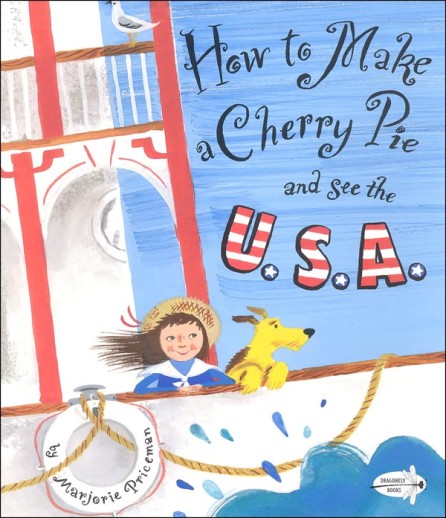We use cookies to make your experience better. To comply with the new e-Privacy directive, we need to ask for your consent to set the cookies. Learn more.
How to Make a Cherry Pie and See the U.S.A.
An American version of the Cherry Pie story that has you criss-crossing the United States looking for the supplies you need to make that wonderful simple-to-make cherry pie if the Cook Shop is closed (is that Cook Shop ever open?). Delightful, colorful illustrations coupled with subtle humor make the story just as enjoyable in the U.S. as in the world. 36 pgs, pb. ~ Janice
Fancy a slice of cherry pie? Let's get started. . . . What, no bowl? No pie pan? No pot holders?
Join our young baker (and her little dog!) as they travel the United Statesfrom New Hampshire to Hawaii, from Alaska to Texasin search of the coal, cotton, clay, and granite they need to create all their baking tools.
In a companion to her bestselling How to Make an Apple Pie and See the World, two-time Caldecott Honor illustrator Marjorie Priceman takes us on a round-the-U.S.A. journey by riverboat, taxi, train, and plane in a culinary adventureand a playful celebration of America's natural resources.
| Product Format: | Paperback |
|---|---|
| Brand: | Dragonfly |
| Author: | Marjorie Priceman |
| Grades: | PK-3 |
| ISBN: | 9780385752930 |
| Length in Inches: | 9.5 |
| Width in Inches: | 8.25 |
| Height in Inches: | 0.25 |
| Weight in Pounds: | 0.35 |

